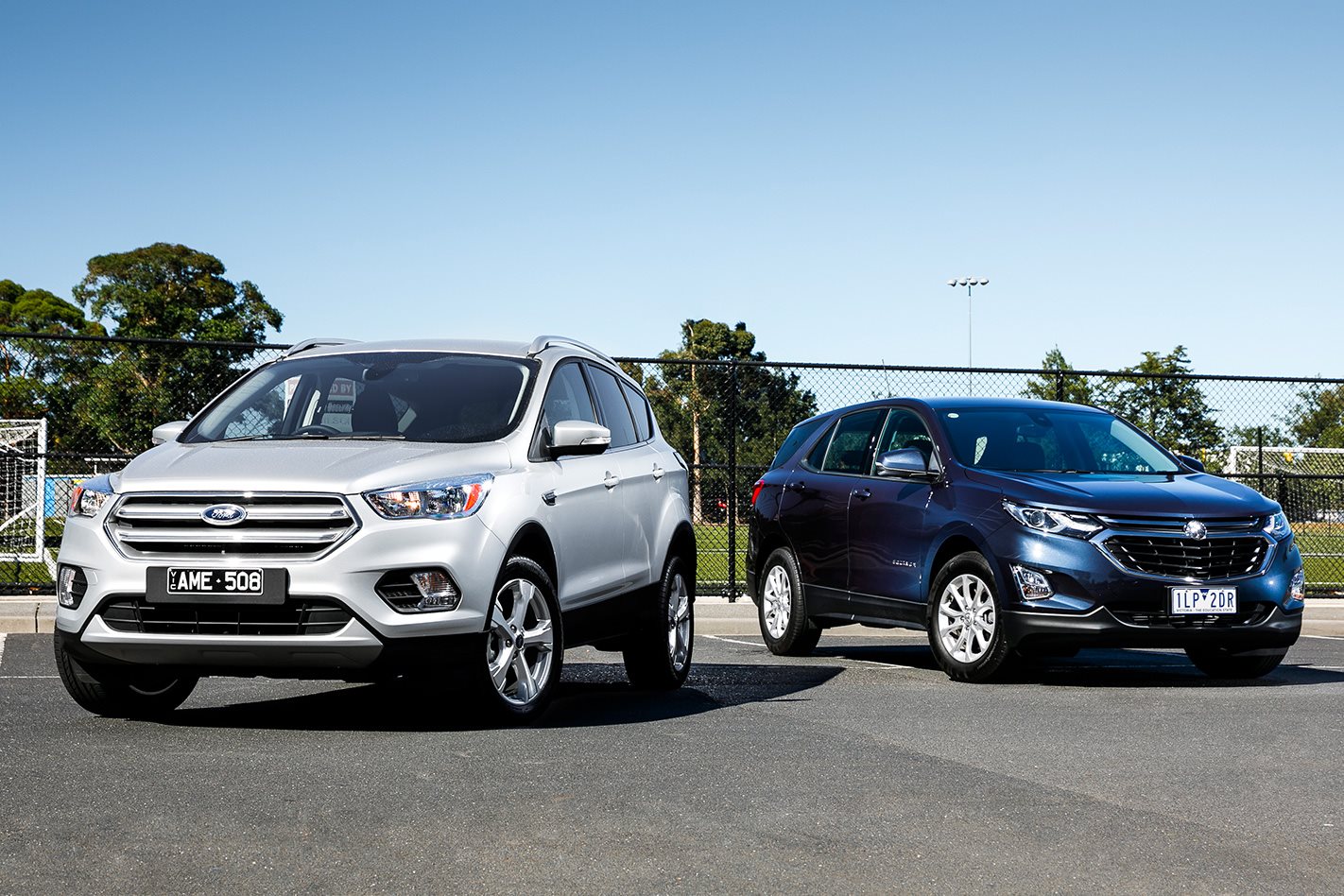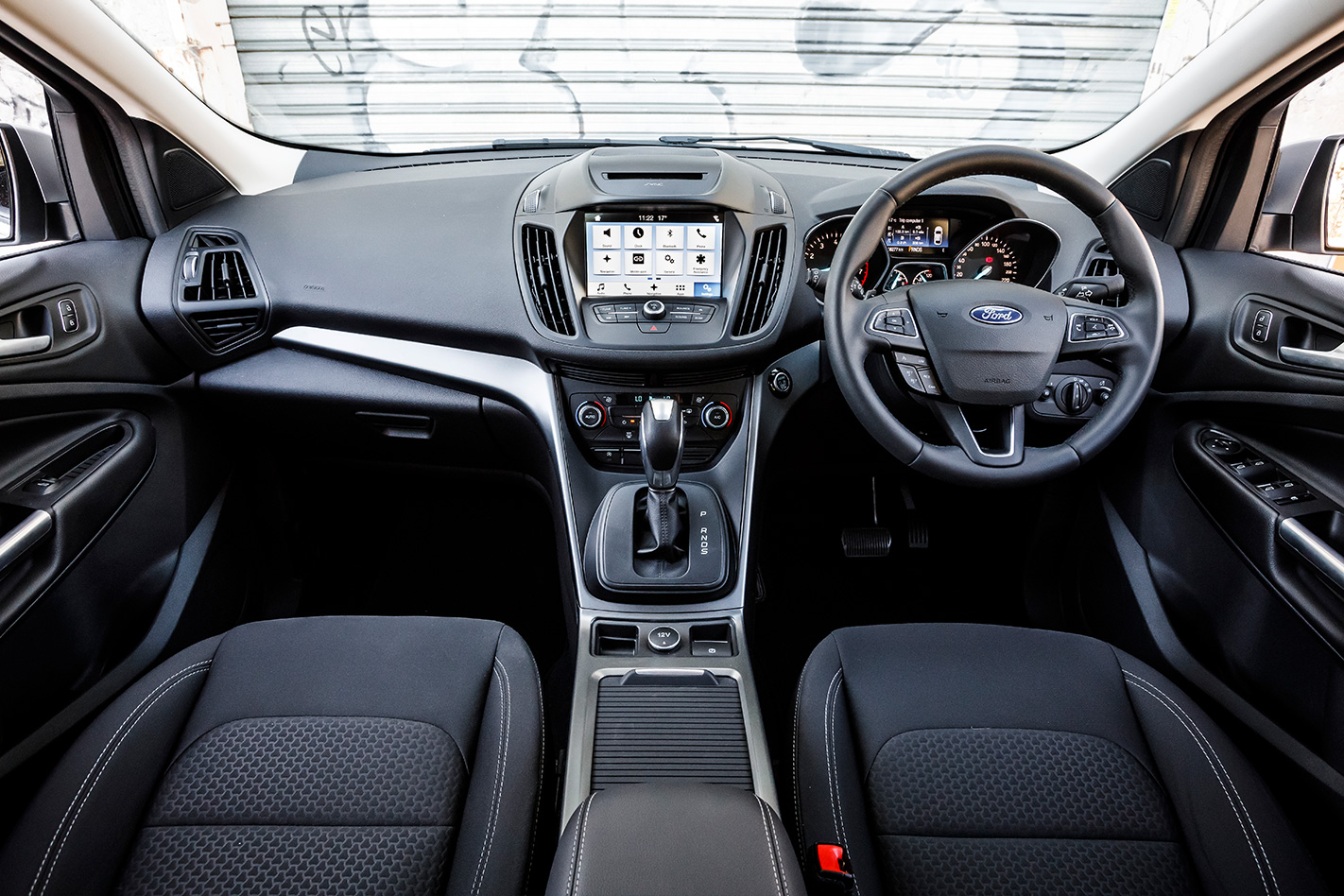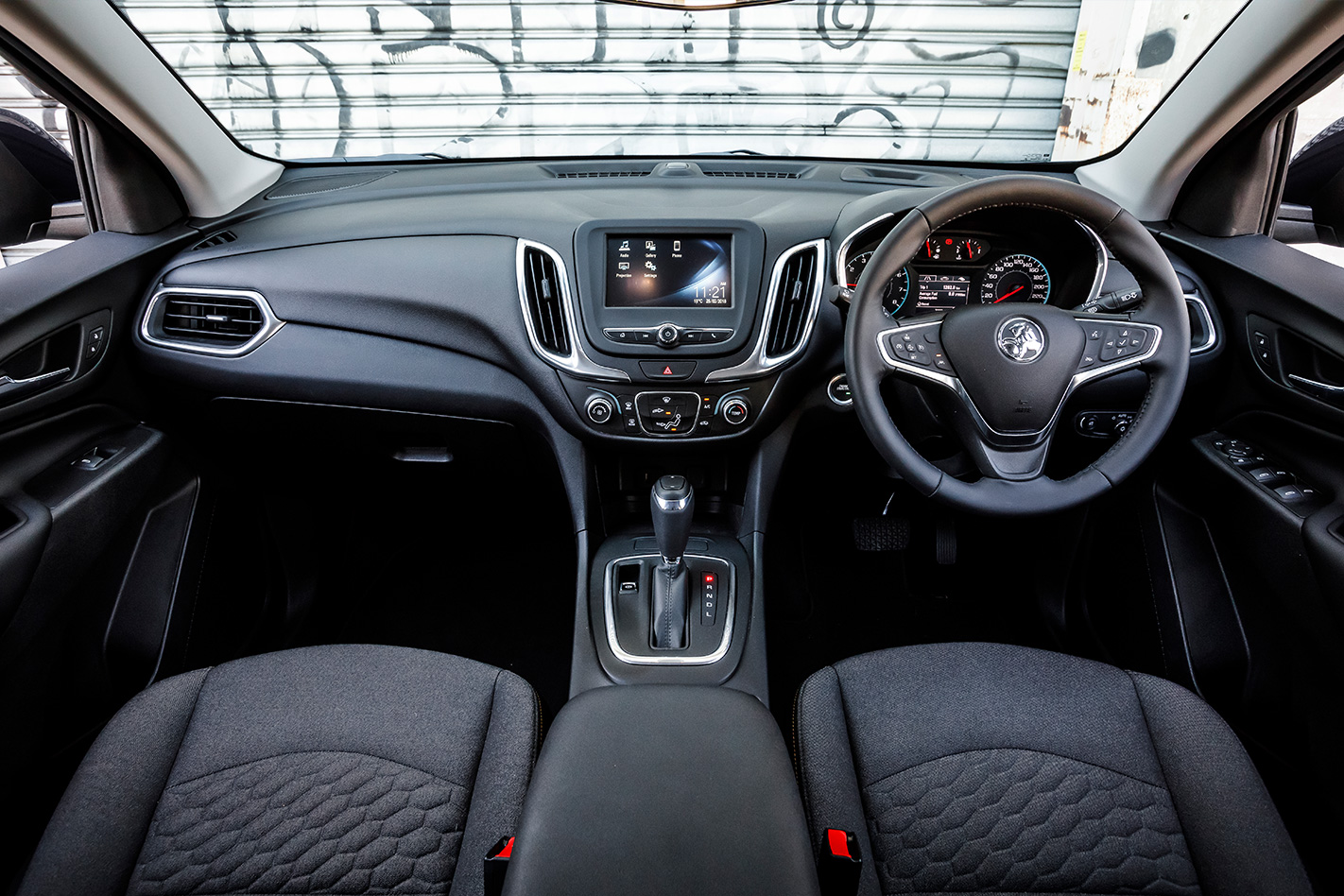
Price and Equipment – Winner: Holden Equinox
With dual-zone climate control, standard sat-nav, privacy glass and additional USB ports, the Escape Trend benefits from a more upmarket fit-out. Countering that is Ford’s decision to charge $1300 extra for AEB, blind-spot monitoring, lane-keep assist and active cruise control, features that the Equinox packs in for free. These key safety omissions could be a deal-breaker for the Escape.
Not as feature-rich as its Ford rival when it comes to mod-cons, but with blind-spot monitoring, lane-keep assist and autonomous emergency braking all standard-issue, the Equinox LS+ has the edge on safety. It feels more bare bones from the driver’s seat though, with manual air-con and a measly 7.0-inch touchscreen, though noise cancellation tech and keyless entry are welcome consolations.
Interior and Connectivity – Winner: Ford Escape
Superior SYNC3 infotainment system with integrated nav, better voice controls and the option of smartphone mirroring gives the Escape the edge. Comfort is good up front and materials quality is better than the Holden overall, though the rear seats aren’t as supportive or spacious, nor do they fold flat. With rear seats folded, the Escape can hold 1603 litres of luggage, the Equinox 1798.
Overwhelmingly dark interior is dominated by budget plastics and ordinary textures, though pleasant cloth trim and well-sculpted front and rear seats help compensate. The 60/40 split rear seats also fold flat with the boot floor, making Equinox a great load carrier. LS+’s infotainment screen needs a smartphone plugged in to display sat-nav info via Apple CarPlay or Android Auto.

Ride and Handling – Winner: Ford Escape
The Escape is more accomplished on the road, with sure-footed handling and a quicker steering rack (2.5 turns lock-to-lock, versus the Holden’s 2.75), that endows it with a refreshing level of agility. It also delivers superior ride comfort on the kind of craggy roads that upset the Equinox’s sensitive suspension, even though it wears larger 18-inch alloys and lower-profile tyres.
For an SUV that rolls on such tall sidewalls, the Equinox has a sharp secondary ride that picks up minor lumps that the Escape simply doesn’t transmit. Light steering also conveys little feel to the driver’s fingertips besides some torque steer, though the locally tuned suspension gamely resists understeer. While capable, the Holden never feels anything like as athletic as the Ford.
Performance and Economy – Winner: Holden Equinox
Escape’s powertrain feels more alert, given its greater top-end power output and the deft calibration of its paddle-shifted six-speed auto. It has a fussier diet though, requiring 95RON premium unleaded at a minimum, which combines with its greater mass to result in higher average fuel consumption (7.2L/100km versus 6.9 for the Equinox), making it a costlier machine to juice.
The LS+’s 1.5-litre turbo four has stacks of grunt. It’s slightly down on power compared to the Escape but generates significantly more torque. What’s more, it’ll happily run on regular 91RON unleaded. Standard six-speed auto works well too, but there’s a prominent whooshing sound as revs ascend. Acoustic refinement could use some additional finesse.

Warranty and Servicing – Winner: Holden Equinox
Service intervals are set for every 15,000km or 12 months, with the first three services costing $325 each, followed by a $585 service at the 60,000km/48-month mark. That pricing structure then repeats for the next four years. The costs are consistent, but there’s no escaping the fact that the Escape is more expensive to own than the Equinox. Warranty lasts for 100,000km or three years.
Holden stipulates 12,000km/12-month maintenance intervals for the Equinox 1.5-litre, with varied prices from service to service. Assuming an ownership period of six years, the Equinox LS+ would cost $1914 in scheduled servicing – $296 less than what the Escape would cost over the same period. As standard, the Equinox provides a three-year, 100,000km warranty.



